Key facts about Paul Cézanne
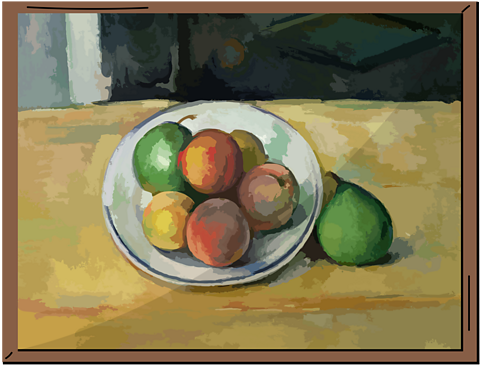
Paul Cézanne was a French artist. He was born in 1839 in Provence, France and died in 1906. He is well-known for the still life paintings he made.
Still life painting is when the subjectMain focus. of the painting is an arrangement of objects.
Objects in a still life painting could be natural items such as fruit or flowers, or manufacturedMade in a large number using machines and people. objects like vases or bottles, but they are things that do not move.
Cézanne painted many still life artworks, often with fruit, jars and fabric in them. Many of the things in his paintings came from his local area of Provence.
Cézanne was very skilled at observingLooking closely and noticing.. You can see that he notices lots of details and includes them in his paintings.
The objects in Cézanne's still life paintings were kept in his art studio and appeared again in different paintings.

Cézanne's painting style
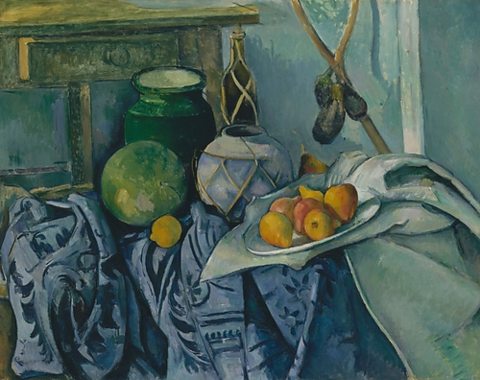
In Still Life with a Ginger Jar and Eggplants, painted in 1893-94, Cézanne used lots of different shapes that overlapped each other.
By including different shadesDarker versions of a colour. and tintsLighter versions of a colour., Cézanne was able to show realistic shadows and the folds of the fabric.
When Cézanne was painting, he would move around the items to see them from different angles.
He would sometimes place some objects at an unusual angle, using coins or blocks to make them lean in a certain direction.
Video: Who was Paul Cézanne?
Learn more about the life and work of Paul Cézanne
Narrator: Paul Cézanne was born in the south of France, in 1839.
Later, he moved to Paris to study art.
He was inspired by artists such as Leonardo da Vinci, Michelangelo and Rembrandt.
Cézanne wanted to take a different approach to painting and the use of colour.
To explore this, he chose to paint still life.
Still life is something that you can see in real life but it doesn't move, like a bowl of fruit.
He realised if you look closely at an object the area around where you're looking is soft and out of focus.
This gave Cézanne an idea.
He used small brushstrokes of colour to show the edges of an object instead of an outline.
Then he added light, shadows and texture to the object to make it stand out.
Paul Cézanne dared to be different and led the way for artists everywhere to look at things from a new perspective.
Paul Cézanne's artworks
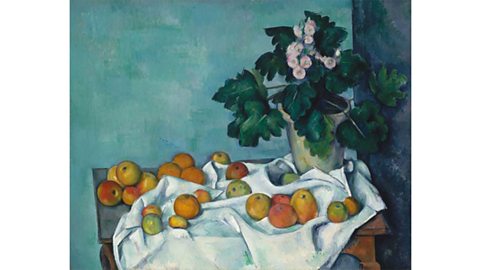
Image caption, Still Life with Apples and a Pot of Primroses, 1890
Potted plants of flowers did not appear very often in Cézanne’s paintings. He took his time observing and painting, and plants and flowers might have changed or drooped too fast. You can try and make your own still life arrangement. Select some items and arrange them on a table but be careful to choose items that won't move or change over time.
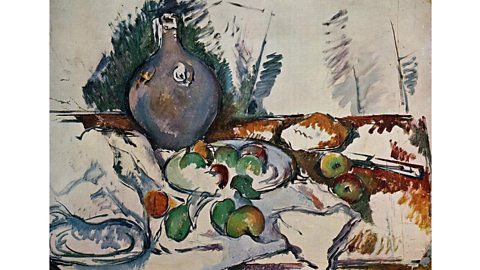
Image caption, Still Life With Water Jug, 1893
In this unfinished work, Cézanne used a dry brush - a brush with very little water on it. He used this method to draw the outlines of the objects he was painting before adding in more colours and details.
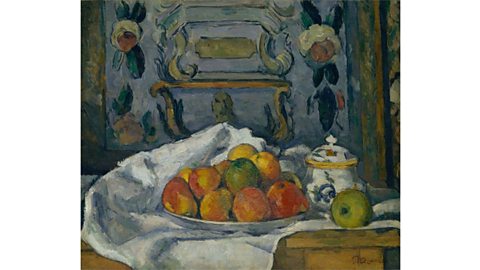
Image caption, Dish of Apples, 1877
Cézanne used heavy brush strokes and thick paint in his earlier still life paintings. If you look closely, you can see the brush marks in his work. When you paint your still life, see if you can leave the brush marks visible on the page. You can even try to use something else to paint with, such as a piece of cardboard.
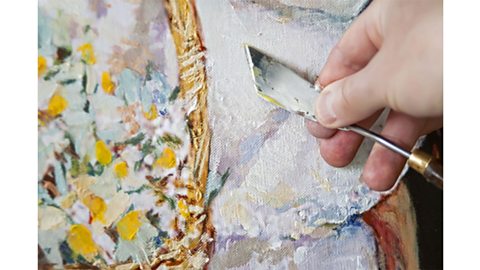
Image caption, This is a special artist's tool called a palette knife. A palette knife allows the artist to apply paint thickly and leaves different shaped marks to that of a paintbrush. Cézanne also used this tool to paint with and you can sometimes see the marks it leaves in his work.
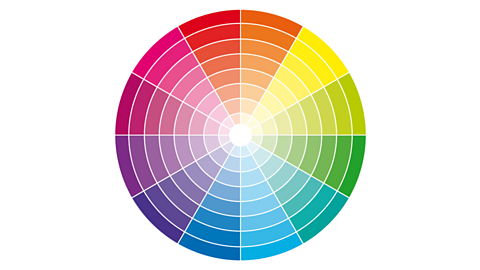
Image caption, Cézanne used many different tints and shades of colours in his work. Try mixing small amounts of white into a colour to make it lighter - this is a tint. Try mixing very small amounts of black into a colour to make it darker - that is a shade. These tints and shades can be used to make your painting more realistic. You can use them to show shadows and shapes, like Cézanne did.
1 of 5
Activity
Did you know?
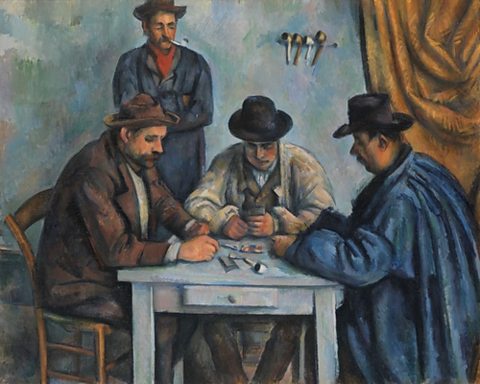
- Cézanne wanted his art to be enjoyed by as many people as possible. That is why he painted simple subjects like apples.
- Cézanne produced more than 1300 paintings. Some were oil paintings and some watercolours. Not all of them were finished.
- The Card Players by Cézanne was sold for around £160 million in 2011.
- Cézanne's art was turned away many times by one of the most well-known French exhibitions, The Salon. The Salon was the official art exhibition of the top art academy in France at that time.
- Cézanne often did not like his own paintings, even though he spent hours making them.

Quiz
Play Art Gallery Rescue. gamePlay Art Gallery Rescue
Help Lily and Will rescue the art gallery!

SATs preparation resources. activitySATs preparation resources
Get ready for the SATs papers with videos, activities, quizzes and games to refresh your knowledge and practise your skills.

More on Painting
Find out more by working through a topic
- count4 of 5
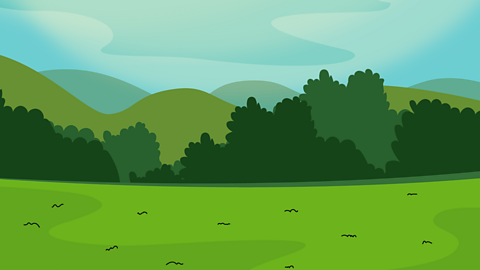
- count5 of 5

- count1 of 5
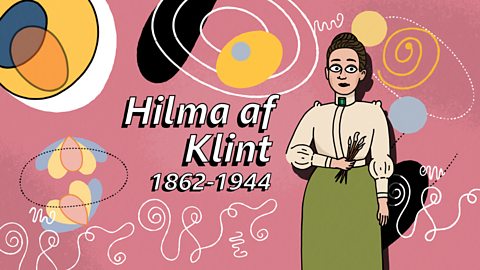
- count2 of 5
